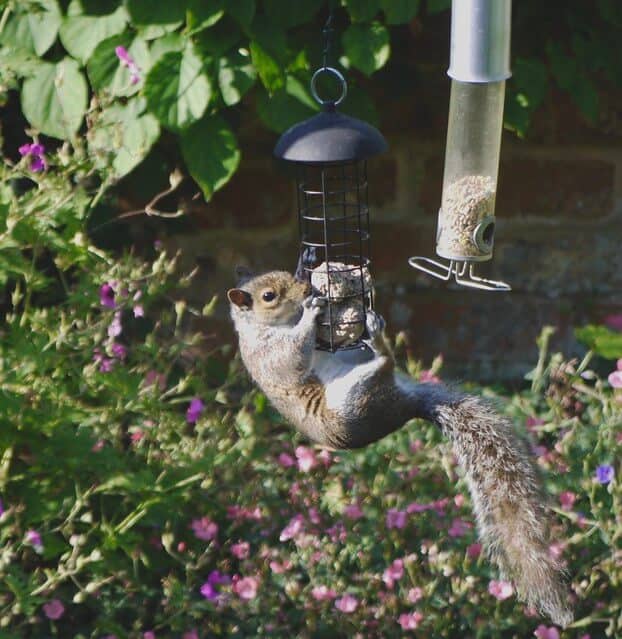There are various types of fertilizers available for your vegetable plants. But as a beginner you may get confused that what will be the best one for growing a healthy plant, right?
Or maybe you are thinking about making an organic vegetable garden. Then, which fertilizer will you choose for your veggie garden?
Well, don’t think too much and choose organic compost for your vegetable garden without any doubt.
The main benefit of choosing organic compost may be the eco-friendly behavior of it. Besides, this mixture of organic materials will cause no damage to your plants and vegetables.
So, let’s know more about this amazing organic fertilizer so that you can know why you have to choose this! Let’s dig in deeper.

Table of Contents
What is organic compost?
As there is already organic in the name, I hope I don’t have to tell you that compost is a natural fertilizer!
But there are various types of organic fertilizers like chemically organic, agriculturally organic, organic without labels, and certified organic. So, the organic compost belongs to the chemically organic variable.
It is basically a mixture of decayed organic matter and used for conditioning and fertilizing land. When any carbon-based matter like vegetables, fruits, manure, grasses, dead leaves, and woody debris are decayed for a long time, they turn into compost.
For turning these materials into compost, you have to take care of the timing. A well-aged compost contains various fungal and microbial agents that work as a decomposition factor. They break down the organic compounds chemically until the basic nutrients for plants come out.
Why choose organic compost for a vegetable garden?
It is not compulsory for you to choose organic compost. You can also choose synthetic fertilizers, chemical fertilizers. But the organic compost is not eco-friendly but also better than synthetic fertilizers or chemical fertilizers because of other benefits of compost.
You can use it:
- To enrich the soil
- To retain soil moisture
- For suppressing plant diseases and pests.
- To reduce the need for chemical fertilizers.
- For encouraging the production of beneficial bacteria and fungi that help in breaking down organic matter to create humus, a rich nutrient-filled material.
- For reducing methane emissions from landfills and lowers your carbon footprint.
Qualities of the best organic compost
Many people think that using some decaying matter in the soil means that they are using compost. But that’s not how compost should be. There are certain qualities that the best type of compost contains. The compost has –
- Dark brown color with profuse fire fangs
- The moisture level of compost should be about 68-70%
- The pH level should be within the range of 7.2-7.8
- Zero smell of ammonia
- No sticky or greasy texture
- No presence of pests or nematodes
Facts for applying compost in the vegetable garden
For growing healthy and delicious veggies, you can use organic compost lavishly in your vegetable garden. Besides, you can kick the disease and pests out from your vegetable garden.
Garden type for applying organic compost
Your plants need fertilizer whether they are in the container, or in the garden bed, right? So, now you may think that can compost work in your garden beds? Or in your containers?
Well, don’t worry about it. Compost can do amazing works both in your garden beds and containers. So, choosing compost is a good idea, right?
General tips for using compost in the vegetable garden
For using compost in your vegetable garden all you have to –
- Use it liberally to give food to your plants through plant roots.
- Apply a 2 or even 3-inch layer of compost each year based on the soil condition in the ground when soil is in a poor condition,
- Use half-rotted compost during fall just by putting it 12 to 18 inches deep inside the soil.
- Mix properly decayed compost with soil and side dress them heavily when plants come up as well as during summer.
- Use the finished compost at least 2 weeks ago before planting.
- Use generously in the planting holes and furrows
Besides this, the mixture of top-soil and compost can work best for top-dressing and side-dressing growing plants as compost release nutrients slowly in this way. Or else, you can use it as a mulch to protect the soil from eroding rains and temperature extremes.
Moreover, you can use compost watering or compost tea that contains soluble nutrients in it as supplementary feeding for growth. For making compost tea, take a watering can and mix compost and water at a 1:1 ratio.
Extra tips for planting seeds
You have to sift the compost before using it for seeds at first. Then mix it with an equal amount of fine soil and sand. Using coarser compost in the bottom will give your soil good drainage.
After this when the seedlings started to grow, repot them into a strong mixture of compost and topsoil with a 1:1 ratio.
Extra tips for vegetable beds
Don’t use too much compost for your vegetable garden beds. Compost will improve the yield of your crops.
Spread an inch of compost across planting beds in early spring and again after harvesting your crops. Two inches is even better!
Put some compost into the planting holes while transplanting them. Also, you can add some of them as a side-dress for some more nutrients.
Extra tips for potting vegetables
For putting compost in your potting vegetables you can follow the general rules. But for more efficiency, you can make a liquid fertilizer of it.
You can make compost tea for your vegetable garden. For making this, soak a bag of well-rotted compost in a large bucket of water. Ten days later dilute the dark mixture with more water until the color becomes lighter.
Now it’s ready to spray in your vegetable containers. Change the compost inside the pot after a certain period. Also, you can apply the liquid tea every two to four weeks during the growth of the plant.
Best 6 readymade compost for vegetable garden
You can buy various organic compost for your garden. Maybe you don’t even know about that compost properly.
So here I am giving you some suggestions about the best organic compost available in the market. So here you go!
1. Charlie’s Compost
It is a natural fertilizer and natural soil amendment made from chicken manure combined with locally sourced organic matter. It is certified organic.
It is specially designed to accelerate the bioactivity and nutrients of the soil. It is totally organic and suitable for vegetables, flowers.
You can use only a small amount of this manure compost even for the poorest textured soil due to its high concentration. Besides, it can burn some of your plants because of overuse.
The main ingredients of this compost are vegetarian and antibiotic-free chicken manure. This compost increases the water retention of the soil and provides essential nitrogen, phosphorous, and potassium to plants.
You can just spread the compost over the soil and work in it with a rotary tiller, plow, shovel, spading fork, or similar tools. It is good for preserving your poor soil and turn it into healthy soil.
2. Michigan Peat 5240 Garden Magic Compost
Michigan peat magic compost is a great choice for vegetables as a top dressing for lawns and planting beds. This is made from partially composting plants and mosses in acidic and waterlogged bogs.
Michigan peat is an odor-free and natural blend of peat moss. Reed-sedge peat is used for this compost. Besides this, cattails, grasses, and sedges are also used in it.
Michigan peat has 65 percent water holding capacity and contains 90 percent organic matter.
3. Hoffman HOF21045 20#
This cow manure organic compost is designed for adding all essential nutrients to your soil in a chemical-free way to grow veggies. It is a non-burning compost that builds humus, improves soil structure.
This compost is made up of digestive grass and grain. It is enriched with nitrogen, phosphorus, and potassium as well as contains a high level of ammonia.
You can use it for top dressing that will provide organic materials to your soil to grow vigorous plants.
4. Coast of Maine Lobster Compost Soil Conditioner
It is a lightweight dark and rich soil that is consists of chitin and calcium-rich lobster shells along with composted cow manure.
The lobster shells are collected from the dark and cold waters of the Bay of Downeast coast of Maine and the Bay of Fundy. It is ideal for conditioning the soil of your vegetable garden.
At first, the lobster shells are blended with the blueberry brush and wood fiber. Then they are kept for 4 to 6 months for churning, aerating, and checking temperatures. Finally, after this process, they are packed in a bag.
Phosphates, calcium, and magnesium are added to the compost pile by the lobster shells. Besides this, the chitin works for retaining moisture and deterring harmful pests, and the calcium works preventing blossom end rot and several different vegetable diseases.
5. Malibu Compost 100507243 715970 Growing Media
Malibu compost is a proprietary blend that has no GMO pesticides, herbicides, growth hormones, or sewage sludge. It aerates the soil to make it richer, fertile, and well-drained. It is suitable for any kind of soil texture.
Malibu compost helps to break the clay soil as well as removes the drainage and compaction problems. It balances the pH of the soil.
By using it, you can ensure healthy roots. Besides, it is good for water retention.
You can put half-inch layer of this compost and it will work as a top dressing. For containers, put 1/16 inch layer for 4 inches pots, and for garden beds, it will be 1 inch for each raised bed. Add it in early spring as well as in fall.
6. Fishnure Fish Manure Organic Living Humus Compost Soil
It is made from fish manure and clay. It is useful for increasing soil nutrients, decreasing parasites, restraining some plant diseases, eliminating weeds seed.
Moreover, it works for aeration, increased yield, water retention, and fertility. One pound of this compost can works for about 60 square feet, so use a little amount while using it for a smaller area. Basically, it doesn’t decompose in the soil rather than it stays to increase the organic matter of the soil.

How To Prepare Organic Compost At Home
Till now we have talked about the ready-made composts available in the market or in garden centers. But the composts available in the market can be a little bit expensive for the gardeners. Besides this, many can’t trust commercial products.
Well for that I am going to share the recipe and making process of compost at home. So let’s go and find out more about it!
Here we are going to talk about two basic types of composting based on your composting location, one is backyard composting and another one is indoor composting.
Backyard Composting
At first, choose a dry, shady spot for your compost pile or compost bin and it must be near a water source. Add the materials that you collect for composting. Add fine small pieces of the materials.
After adding them, moist them with water. Once the pile is established, ad grass clippings and green waste into the pile and bury vegetable and fruit waste under 10 inches of the materials.
You can cover the compost pile top with a tarp to keep it moist. When the downside of the pile turned into dark, the compost is ready to use. It may take time between 2 months to 2 years!
Indoor Composting
If there is not enough space outside, make the compost inside your house. Use a special type of bin that you can collect from a local hardware store, gardening supplies store, or make yourself.
Remember to move the load compost materials and keep track of your throwing materials. It may take 2 to 5 weeks for your compost to get ready.
Properly manage the bin if you don’t want pest or rodent attacks on the pile. Besides, the poorly managed pile of compost can make an odor.
What Should You Use For Compost?
Many people get confused about the composting materials. So, this part is especially for them.
There are three basic ingredients that all composting needs: browns (branches, dead leaves), greens (vegetable scraps, fruit scraps, coffee grounds), and water.
The compost pile should contain an equal amount of browns to greens. Besides, there should be alternative layers of different size organic matters.
The brown materials will provide carbon for your compost while the green materials will provide nitrogen, and the water will provide moisture for breaking down the organic matter.
What To Compost
- Fruits and vegetables
- Eggshells, Nutshells
- Coffee grounds and filters, Teabags
- Shredded newspaper
- Cardboard, Paper
- Yard trimmings, plant trimmings, Grass clippings
- Houseplants, Leaves
- Hay and straws
- Wood chips, Wood fiber, Fireplace ashes
- Cotton and Wool Rugs
- Hair and fur
What Not To Compost And Why
- Black walnut tree leaves or twigs, coal or charcoal ash (harmful for plants)
- Dairy products, eggs, meat or fish bones and scraps, fats, grease, lard, or oils (make odor and attract pests)
- Diseased or insect-ridden plants (can affect other plants when it will be applied)
- Pet wastes (might contain parasites, bacteria, germs, pathogens, and viruses harmful to humans)
- Yard trimmings treated with chemical pesticides (might kill beneficial composting organisms)
Composting Process: 3 Easy Steps
- Step 1: The first step is to combine brown and green. You should have enough compost products to make a pile at least 3 feet deep. Once you have the compost products, you need to combine your wet, green items with your dry, brown items.
For best results, start building your compost pile by mixing three parts brown with one part green materials. If the compost pile looks too wet and smells, add more brown items or aerate more often. If you see it looks extremely brown and dry, then put some green items and water to make it slightly moist.
- Step 2: In this step, you need to water the pile. Sprinkle water over the pile regularly just to make it like a damp sponge. Don’t add too much water, otherwise, the microorganisms in your pile will become waterlogged and drown that will rot your pile.
Monitor the temperature to make sure that the materials are properly decomposing. You can simply reach into the middle of the pile with your hand. Your compost pile should feel warm.
- Step 3: In the third stage, you have to stir up the pile. During the growing season, you should provide the pile with oxygen by turning it once a week with a garden fork.
The best time to turn the compost is when the center of the pile feels warm. Besides, stirring will stop the compost make an odor.
Is The Compost Ready To Use?
After following the above-stated processes, when the compost no longer gives off heat and becomes dry, brown, and crumbly, it’s fully ready to go inside your garden soil or potting soil.
Basically, proper decayed compost contains nitrogen, an essential element for the plants. When the materials for compost start to decompose, bacteria and fungi break down nitrogen-based components into ammonium. Then microbe process the ammonium and make nitrate.
In the final stage of composting, nitrate converts into nitrogen, and compost is ready for use. However, a poorly decayed compost can’t complete this process properly and produced a lot of ammonia. If you sense a foul odor from the mix, then the compost is not suitable for use.
Can Vegetable Plants Grow In Compost Without Soil?
It is not a good idea to grow veggie plants only in compost. It is only a soil amendment in which some essential elements can be missing. Too much compost can cause ammonia toxicity and excessive salinity.
Planting in only compost can lead your vegetable plant to death as it can cause problems with water retention and stability. Using compost with topsoil can give good drainage through heavy soil while it retains water in sandy soil. But when compost is alone, it can dry out quickly.
Besides, it can give stability to a strong root system. It also compacts quickly so if using it in a container, it won’t go for one week. Your plant just needs one or two inches of compost with the topsoil.
A Few Last Words For You
I hope now you know the reason why you should prefer organic compost for your vegetable garden.
There are so many benefits of this organic fertilizer. Aged compost will not only turn your soil into healthy soil but also make sure that your plants are getting essential elements through healthy plant roots.
Besides you can get various types of compost easily available in the market. However, in case, you find it difficult to buy, there are some names I have suggested or you can easily make it at home.
Okay, I hope things are clear now. Wish you all the best for your gardening. Happy gardening!




 Transplanting avocado seeds into soil is quite easy, you need to know the proper methods first. Also, you should look out for any symptoms that show weakness in plants. If you can manage to transplant your avocado seed in the correct time following the right methods, you can successfully grow avocados for the future. So, stay with us and read the rest of the article to find out the correct method and timing related to avocado seed transplantation.
Transplanting avocado seeds into soil is quite easy, you need to know the proper methods first. Also, you should look out for any symptoms that show weakness in plants. If you can manage to transplant your avocado seed in the correct time following the right methods, you can successfully grow avocados for the future. So, stay with us and read the rest of the article to find out the correct method and timing related to avocado seed transplantation.

 If not then please check the soil of your container plants. Without ensuring the best soil for your plant roots in containers you can’t expect your plant to grow. But how can you know that it is the best soil, right?
Well, that’s why I am here to tell you about the best soil to grow vegetable plants in the container. So, without any delay let’s dive in deep!
If not then please check the soil of your container plants. Without ensuring the best soil for your plant roots in containers you can’t expect your plant to grow. But how can you know that it is the best soil, right?
Well, that’s why I am here to tell you about the best soil to grow vegetable plants in the container. So, without any delay let’s dive in deep!
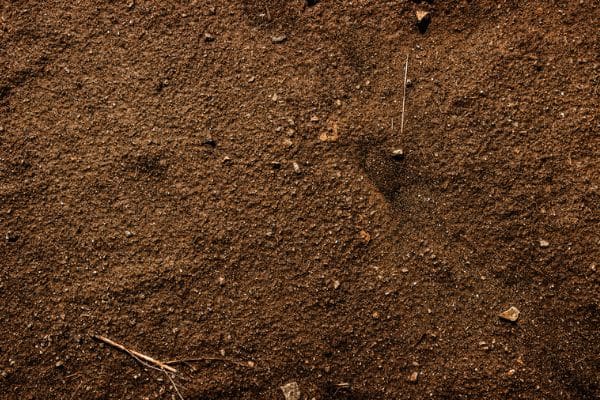 It is sticky in wet conditions but hard and heavy when it dries. Even it can block the drainage holes sometimes. Really hard to dig!
You need to use organic material to fix the soil.
It is sticky in wet conditions but hard and heavy when it dries. Even it can block the drainage holes sometimes. Really hard to dig!
You need to use organic material to fix the soil.
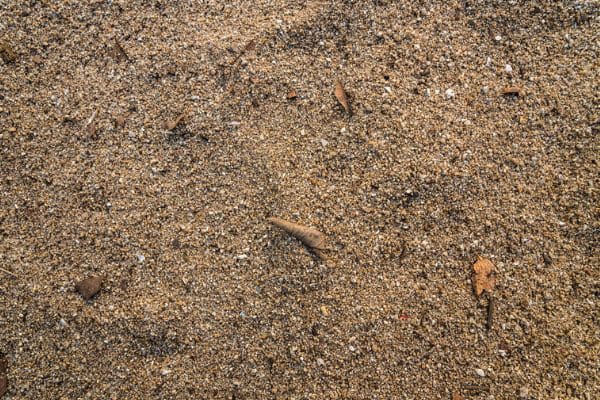 For amending sandy soil, loosen up the dirt and mix some compost as well as organic matter with the soil. Use a 2:1 ratio for soil and others. Make sure the matter is mixed about 3 inches deeper from the surface.
You can also add some grass clippings for water retention. Also, ensure proper
For amending sandy soil, loosen up the dirt and mix some compost as well as organic matter with the soil. Use a 2:1 ratio for soil and others. Make sure the matter is mixed about 3 inches deeper from the surface.
You can also add some grass clippings for water retention. Also, ensure proper  For amending the soil use lime along with other organic fertilizers. If it is not acidic, then don’t use lime.
Besides, using some mulch or clippings before planting is really helpful for aeration and drainage.
For amending the soil use lime along with other organic fertilizers. If it is not acidic, then don’t use lime.
Besides, using some mulch or clippings before planting is really helpful for aeration and drainage.
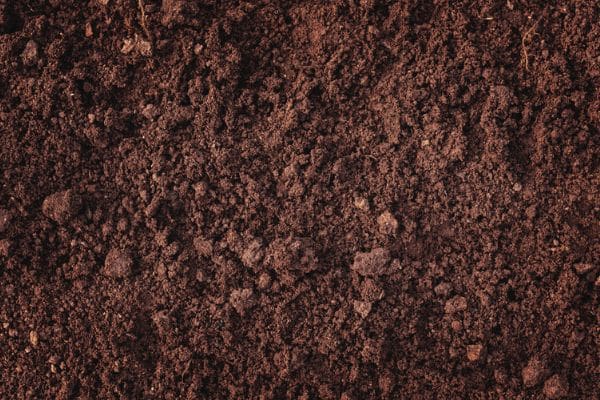 There are all vital nutrients present in the soil as well as its nutrient retention is good. You don’t need to do too much for amending this soil. That’s why it’s good quality soil.
Just use some natural fertilizer to maintain it and you are lucky enough to get good veggies!
There are all vital nutrients present in the soil as well as its nutrient retention is good. You don’t need to do too much for amending this soil. That’s why it’s good quality soil.
Just use some natural fertilizer to maintain it and you are lucky enough to get good veggies!
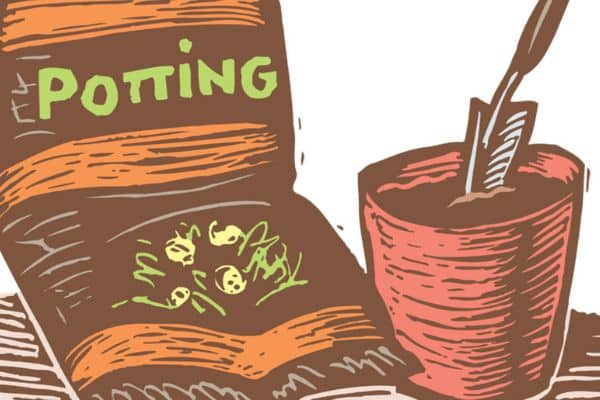 Potting soil mixtures are completely organic matter mixture that doesn’t contain any kind of soil. It’s a blending mixture of the following mentioned items:
Potting soil mixtures are completely organic matter mixture that doesn’t contain any kind of soil. It’s a blending mixture of the following mentioned items:
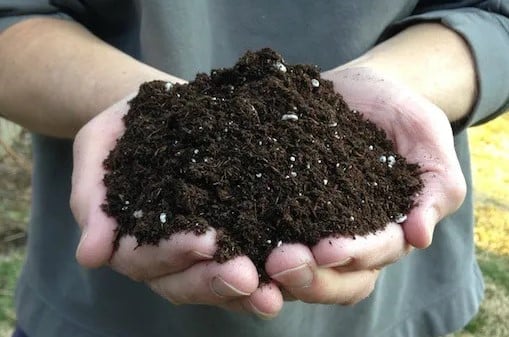 Besides, the readymade mixtures can have water crystals, soil wetters, or chemical fertilizers that are a threat to users. But when you make it on your own, you can avoid it.
You need to make a loose and porous mix for proper transport of fertilizer, water, and air as well as that will ensure proper drainage.
For making a basic potting mix, let’s look into the recipe:
Besides, the readymade mixtures can have water crystals, soil wetters, or chemical fertilizers that are a threat to users. But when you make it on your own, you can avoid it.
You need to make a loose and porous mix for proper transport of fertilizer, water, and air as well as that will ensure proper drainage.
For making a basic potting mix, let’s look into the recipe:


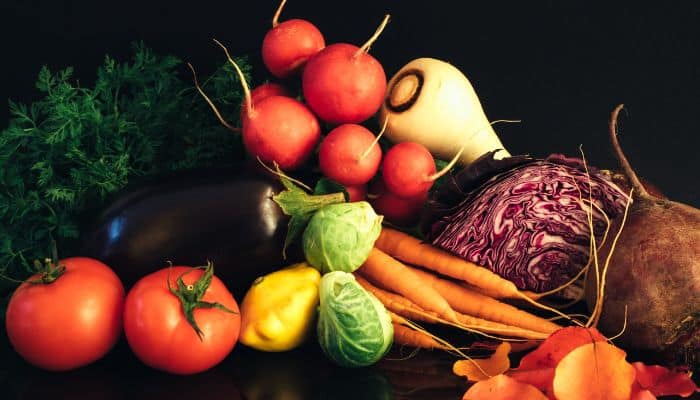


 This way you can know what to do and how to do it. Besides, the disappointment of failure will be smaller with small gardens.
Also by this, you will be aware of the budget of your garden and how much hard work it will take to make a garden.
Moreover, for making a sample garden you don’t need extra space. You can make this on a deck or even a balcony where you get enough sunlight.
This way you can know what to do and how to do it. Besides, the disappointment of failure will be smaller with small gardens.
Also by this, you will be aware of the budget of your garden and how much hard work it will take to make a garden.
Moreover, for making a sample garden you don’t need extra space. You can make this on a deck or even a balcony where you get enough sunlight.
 So, in the shady part, you can plant some herbs or leafy veggies like lettuce, kale, parsley, and spinach.
For root vegetables like carrots, and radish, 4 hours of sunlight is enough. So to cultivate root vegetables you can choose a land sunny for a particular day time.
Besides, the veggie can enjoy a little bit of afternoon shade if the summer is too hot!
So, in the shady part, you can plant some herbs or leafy veggies like lettuce, kale, parsley, and spinach.
For root vegetables like carrots, and radish, 4 hours of sunlight is enough. So to cultivate root vegetables you can choose a land sunny for a particular day time.
Besides, the veggie can enjoy a little bit of afternoon shade if the summer is too hot!
 So just start with a small one and collect experiences!
So just start with a small one and collect experiences!
 While selecting vegetables read the instructions on the seed package carefully. They have different benefits, some are suitable for container gardening, some are disease resistant, and many more.
While selecting vegetables read the instructions on the seed package carefully. They have different benefits, some are suitable for container gardening, some are disease resistant, and many more.
 You can select row cropping, intensive cropping, and square-foot cropping layout for your garden.
Plant your veggies at least 18 inches apart rows so that you can get to walk. This approach is beneficial for big vegetable gardens. Row cropping will help you to use mechanical instruments or to fight weeds.
The problem with this approach is that you can’t plant many vegetables. But with intensive cropping, you will not face that problem.
In an intensive cropping approach, you plant 2 or 3 plants really close in a wide row. The width of the row is about 4 feet. Now you may think that the plants are too close to each other.
Won’t that be a problem? So let me tell you that the plants are at a safe distance and grown-up plants won’t touch each other’s leaves.
In this layout, you can use every square inch of your garden but it is difficult to reach the plants when needed. Moreover, you can’t use it for vine plants like cucumber.
There is another method called the square foot method that is derived from the intensive cropping method. Here you have to use a physical gridding system and divide a raised 4×4 garden bed into 1-foot squares per portion.
Also, use 8 cubic feet of great quality garden soil and make 6 inches high for both sides. This layout works like 1 XL plant per square, 4 large plants per square, 9 medium plants per square, and 16 small plants per square.
Tall plants like tomato plants and vertical supported plants like peas, beans, and cucumbers can be planted on the north side of the garden. If you plant tall veggies in the north, they won’t shade the other vegetables.
Use the shady (unavoidable shades) parts of your garden for cold seasons and use the sunny part for summer and spring. Moreover, you can use your DIY frame trellis for growing veggies.
Try to plant vegetables seasonally. After harvesting, plant another vegetable for the next season.
If you want to plant annual or
You can select row cropping, intensive cropping, and square-foot cropping layout for your garden.
Plant your veggies at least 18 inches apart rows so that you can get to walk. This approach is beneficial for big vegetable gardens. Row cropping will help you to use mechanical instruments or to fight weeds.
The problem with this approach is that you can’t plant many vegetables. But with intensive cropping, you will not face that problem.
In an intensive cropping approach, you plant 2 or 3 plants really close in a wide row. The width of the row is about 4 feet. Now you may think that the plants are too close to each other.
Won’t that be a problem? So let me tell you that the plants are at a safe distance and grown-up plants won’t touch each other’s leaves.
In this layout, you can use every square inch of your garden but it is difficult to reach the plants when needed. Moreover, you can’t use it for vine plants like cucumber.
There is another method called the square foot method that is derived from the intensive cropping method. Here you have to use a physical gridding system and divide a raised 4×4 garden bed into 1-foot squares per portion.
Also, use 8 cubic feet of great quality garden soil and make 6 inches high for both sides. This layout works like 1 XL plant per square, 4 large plants per square, 9 medium plants per square, and 16 small plants per square.
Tall plants like tomato plants and vertical supported plants like peas, beans, and cucumbers can be planted on the north side of the garden. If you plant tall veggies in the north, they won’t shade the other vegetables.
Use the shady (unavoidable shades) parts of your garden for cold seasons and use the sunny part for summer and spring. Moreover, you can use your DIY frame trellis for growing veggies.
Try to plant vegetables seasonally. After harvesting, plant another vegetable for the next season.
If you want to plant annual or
 You can put direct seeds of tap-rooted vegetables like carrots or radishes. However, for the vegetables that take a long time to harvest, you better don’t put them directly in the soil. First, make seedlings and then plant.
For directly planting you can choose from two different methods given below:
You can put direct seeds of tap-rooted vegetables like carrots or radishes. However, for the vegetables that take a long time to harvest, you better don’t put them directly in the soil. First, make seedlings and then plant.
For directly planting you can choose from two different methods given below:
 Wait! Don’t be upset. All you have to do now is take care of your garden and all your hard work will pay off!
Some basic tips you need to follow to grow healthy plants.
Wait! Don’t be upset. All you have to do now is take care of your garden and all your hard work will pay off!
Some basic tips you need to follow to grow healthy plants.
 Thus the plant will dry before night otherwise damp plants get attacked by fungus easily. Remove the affected plants from your garden and don’t add them to the pile of compost.
In addition, you can choose to plant the disease-resistant variation of your desired veggies. Find out the detailed clarification about the diseases and cure them quickly!
Thus the plant will dry before night otherwise damp plants get attacked by fungus easily. Remove the affected plants from your garden and don’t add them to the pile of compost.
In addition, you can choose to plant the disease-resistant variation of your desired veggies. Find out the detailed clarification about the diseases and cure them quickly!


 As you love your peony plants, you should take preventive measures to secure them from heavy rainfall and storm damage. Also, the shrubs have initial flower buds that result in a good outcome.
So, if you do not take care and provide protection to the peony buds timely you will not get the expected bloom. However, smaller plants like Herbaceous peonies are comparatively easier to provide protection.
So, follow the steps below to protect your native plants from heavy rainfall.
As you love your peony plants, you should take preventive measures to secure them from heavy rainfall and storm damage. Also, the shrubs have initial flower buds that result in a good outcome.
So, if you do not take care and provide protection to the peony buds timely you will not get the expected bloom. However, smaller plants like Herbaceous peonies are comparatively easier to provide protection.
So, follow the steps below to protect your native plants from heavy rainfall.




 You can buy “Whiskey Barrel Planter”. It is a unique option for the best size pot as it is already drilled with drainage holes. So, you don’t have to drill yourself. Also, they come in multiple sizes and colors. You can buy it on Amazon.
Also, you will find the “Self-Watering Pot” another good option. It is suitable for the dry region where the climate is hotter. It slowly plants the water for a longer period of time.
However, if you select this pot, check frequently if the water is clogging or not. Otherwise, the peony roots may start to rot.
You can buy “Whiskey Barrel Planter”. It is a unique option for the best size pot as it is already drilled with drainage holes. So, you don’t have to drill yourself. Also, they come in multiple sizes and colors. You can buy it on Amazon.
Also, you will find the “Self-Watering Pot” another good option. It is suitable for the dry region where the climate is hotter. It slowly plants the water for a longer period of time.
However, if you select this pot, check frequently if the water is clogging or not. Otherwise, the peony roots may start to rot.

 Try not to keep your container outside if it is freezing cold, you might want to move them inside. This will protect the tuberous roots from getting frozen and damaged.
Place the container in a basement or an unheated garage for the winter. Although they die in case of hard freezes, they also need a moderately cooler area to blossom better for the rest of the season.
Try not to keep your container outside if it is freezing cold, you might want to move them inside. This will protect the tuberous roots from getting frozen and damaged.
Place the container in a basement or an unheated garage for the winter. Although they die in case of hard freezes, they also need a moderately cooler area to blossom better for the rest of the season.
 Cut back the dead stems to the ground in fall. This helps to prevent insects and diseases. Also, the container looks clean. The ideal place to cut the stem of peony is above a healthy bud. If it is attacked by diseases make sure you cut back up to the healthy portion.
When you remove the stains try not to damage the crown which is an important part between the roots and the stems. Remove the entire stem by cutting it close to the ground only in case of severe injury or overgrowth. You can remove a certain number of peony buds to control the quantity and flower size.
If you leave the bud at the tip of a stem but remove the side flower buds, there is a chance that you will get a very large bloom.
On the other hand, if you remove the terminal flower buds and leave the side ones, it will result in an abundance of flowers, but their size will be small.
Cut back the dead stems to the ground in fall. This helps to prevent insects and diseases. Also, the container looks clean. The ideal place to cut the stem of peony is above a healthy bud. If it is attacked by diseases make sure you cut back up to the healthy portion.
When you remove the stains try not to damage the crown which is an important part between the roots and the stems. Remove the entire stem by cutting it close to the ground only in case of severe injury or overgrowth. You can remove a certain number of peony buds to control the quantity and flower size.
If you leave the bud at the tip of a stem but remove the side flower buds, there is a chance that you will get a very large bloom.
On the other hand, if you remove the terminal flower buds and leave the side ones, it will result in an abundance of flowers, but their size will be small.
